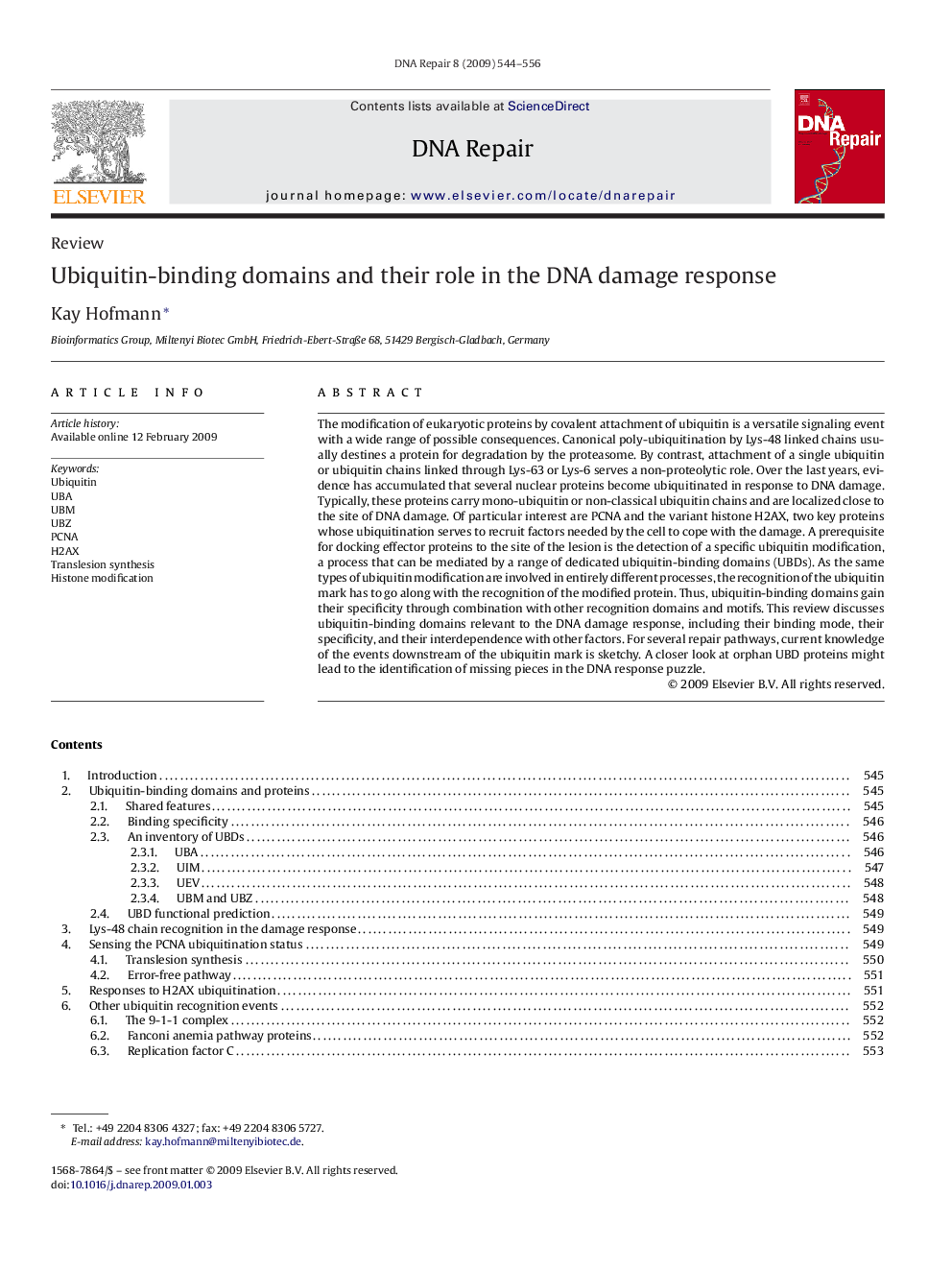| Article ID | Journal | Published Year | Pages | File Type |
|---|---|---|---|---|
| 1981317 | DNA Repair | 2009 | 13 Pages |
The modification of eukaryotic proteins by covalent attachment of ubiquitin is a versatile signaling event with a wide range of possible consequences. Canonical poly-ubiquitination by Lys-48 linked chains usually destines a protein for degradation by the proteasome. By contrast, attachment of a single ubiquitin or ubiquitin chains linked through Lys-63 or Lys-6 serves a non-proteolytic role. Over the last years, evidence has accumulated that several nuclear proteins become ubiquitinated in response to DNA damage. Typically, these proteins carry mono-ubiquitin or non-classical ubiquitin chains and are localized close to the site of DNA damage. Of particular interest are PCNA and the variant histone H2AX, two key proteins whose ubiquitination serves to recruit factors needed by the cell to cope with the damage. A prerequisite for docking effector proteins to the site of the lesion is the detection of a specific ubiquitin modification, a process that can be mediated by a range of dedicated ubiquitin-binding domains (UBDs). As the same types of ubiquitin modification are involved in entirely different processes, the recognition of the ubiquitin mark has to go along with the recognition of the modified protein. Thus, ubiquitin-binding domains gain their specificity through combination with other recognition domains and motifs. This review discusses ubiquitin-binding domains relevant to the DNA damage response, including their binding mode, their specificity, and their interdependence with other factors. For several repair pathways, current knowledge of the events downstream of the ubiquitin mark is sketchy. A closer look at orphan UBD proteins might lead to the identification of missing pieces in the DNA response puzzle.
